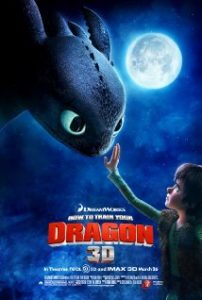 Okay, so… I got a little excited two weeks ago when the Celt found a preview for How to Find Your Dragon 2. A little. I might have been a little un-Swedish. But here’s why.
Okay, so… I got a little excited two weeks ago when the Celt found a preview for How to Find Your Dragon 2. A little. I might have been a little un-Swedish. But here’s why.
Trying to tell a story that draws in adults and younger folk isn’t as easy as some think (both critics and creators). You can’t get too stupid (or adults AND kids will hate it), and you can’t get too cerebral or the kids (and let’s face it, many adults) will hate it. But How to Train Your Dragon finds this balance point and soars away with it.
The crazy thing about it is that this movie kind of snuck its way into the movie landscape. Unlike Pixar films that are fanfared and publicized well in advance (a very small teaser trailer for Brave was out at least a year before it hit the screens), I didn’t hear of this one until I saw a trailer a mere couple of months before it was released. And rather than try to give us the whole plot of the movie, the trailer did what the trailer released for its sequel did last week: evoke a feeling.
It’s essentially the moment seen in the poster in the upper right, but better. Dragons (and this dragon in particular) in the movie have up until now been unknown and powerful and dangerous–tapping into centuries of storytelling that have made dragons touchstones of mystery and magic. But, this moment posits, what if you could reach out and actually touch that mystery… and while you were doing that, what if that mystery decided it wanted to reach out to you as well?
Wow.
And this undercurrent is felt throughout the movie. Sure, there are some moments that are more kiddie or more obvious than I’d like (I wasn’t quite sure at first what to make of the voiceover used in the opening), but these shortcomings are buoyed by the undercurrent of magic and mystery, and completely erased by the strong story. We understand why Hiccup–the boy in the poster–reaches out to the dragon, but we also know what this is going to cost him personally. Dragons and humans just don’t mix, it’s been made clear, and there will be repercussions.
Another fine element of the film is that the adults are allowed to be smart. What a concept, I know, but one thing Roger Ebert frequently noted in the last couple of years (I am really going to miss reading that man’s reviews…) is how often adults are made to be stupid when kids or teens are the protagonists of a movie. But in How to Train your Dragon, Hiccup’s father has feelings that are clearly understood and valued just as much as Hiccup’s. He’s not one dimensional, either, changing in reaction to the events of the story: just as Hiccup is allowed to change. True, the adults can be silly at times, but so can the kids (and this movie knows when it needs to be silly and when it needs to be serious).
The movie doesn’t stop imploding typical Hollywood fare there, either. Its characters often aren’t… pretty. Stoick the Vast (Hiccup’s father) is a big, beefy Viking warrior in the classic sense. He doesn’t have slabs of muscle Hollywoodily stacked on top of more slabs of muscle. His arms are thick but not defined, and also clearly strong–not unlike some arms you’ll actually see in the real world. And his skin… his skin is a bit pale and freckled and ruddy, not unlike some other people you’ll see in the real world. How strange to see a bit of real proportion in a cartoon, eh?
So, this movie knows how to be real, knows when it needs to get serious, and knows when it needs to fly (something its upcoming sequel seems to be remembering as well). Not every movie knows how to do that, so it’s a real treat when one does–if you haven’t seen this one already, you should.
